Pressure Cooker Dulce de Leche {Stovetop vs. InstantPot}
A simple tutorial on making delicious dulce de leche in the pressure cooker (with slow cooker instructions, too).
Dulce de leche is otherworldy in its deliciousness. Years ago I posted a tutorial on how to make the glorious stuff yourself in the slow cooker.
It’s simple and foolproof and has been my mode of choice for a long time. The only downside is that it takes a good eight or so hours (wherefore art thou patience?).
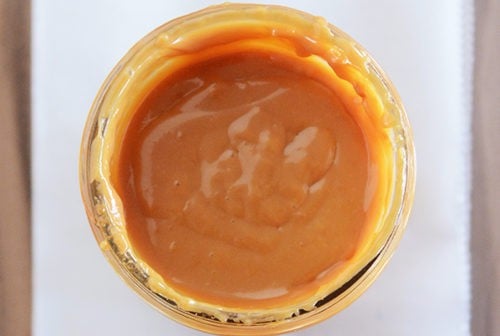
During our chat about pressure cooking last Friday, Mollie, a commenter (and someone I’ve actually met in real life through blogging), said she had just made dulce de leche in her pressure cooker and I was seriously like “how come I haven’t tried that yet?!?” And so I went immediately into the kitchen and made it (refer to the patience comment above).
My haste had two purposes:
1) dulce de leche, obvs and
2) I wanted to do a side-by-side comparison making dulce de leche in both my stovetop pressure cooker and the InstantPot (more details on both of those bad boys and why I like each of them for different reasons in last week’s post) to see if the small difference in psi between the two would make a difference. The InstantPot, and other electric models, maxes out at about 11.6 psi while the stovetop models usually get up to 15 psi.
Here’s what happened.
I started with two pint-size canning jars and filled them with sweetened condensed milk (three 14-ounce cans split between the two jars).
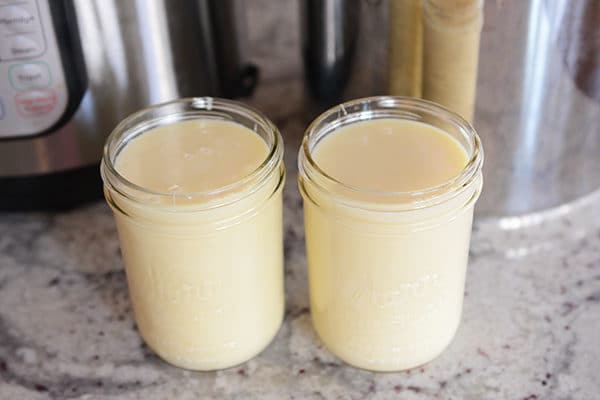
Using the steamer inserts for both the InstantPot and the Kuhn-Rikon, I capped a ring and lid on the jars and placed them in the center of each pot.
Next, I added water until it came up halfway on the jar (about 12-13 cups for each pressure cooker). Consult your pressure cooker manufacturer’s directions to be sure you don’t overfill the pressure cooker with water.
I sealed the pressure cookers and for the InstantPot, I made sure the valve was turned up to seal instead of downward toward venting (it wouldn’t reach pressure if the valve was pointing down toward Venting).
Then, I selected Manual –> adjusted the time to 50 minutes –> and let it go. For the Kuhn-Rikon, I brought it to high pressure on one burner, transferred it to a burner preheated on low and let it maintain at high pressure for 50 minutes.
Interestingly, if you are nerdy like me and like to know more details: the InstantPot took 19 minutes to come to high pressure and the Kuhn-Rikon took 17 minutes. Pretty close there, little pressure cooking friends.
I chose to do a quick-release for the dulce de leche. Because the sooner I can get my hands on warm dulce de leche, the happier the existence of everyone in my home. Using a spoon, I released all the steam for both models (for the InstantPot, you don’t have to hold the valve to vent like you do the stovetop pressure cooker).
And the result? (After I risked life and limb to get the piping hot molten lava filled jars of dulce de leche out…)
After 50 minutes on high pressure for both pressure cookers, the Kuhn-Rikon stovetop dulce de leche was richer and darker whereas the InstantPot dulce was a bit lighter in color? Big deal? Eh, maybe not.
I ended up putting the InstantPot dulce de leche back in for another 10 minutes on high pressure because I like the dulce de leche to be more full-flavored. It clearly wasn’t a matter of one pressure cooker had the dulce de leche magic and the other didn’t – it’s just that the InstantPot’s lower psi means it needed more time.
The Summary
1) Dulce de leche works beautifully in the pressure cooker and takes a fraction of the time it does in the slow cooker. Will I make it this way from here on out? Yes.
2) If you have an electric pressure cooker, you may want to add time to the dulce de leche as the psi (pressure per square inch) doesn’t get as high as a stovetop model. Extrapolating this a bit further, this simple experiment shows me that the InstantPot isn’t cooking as high as a stovetop model so keep that in mind for all recipes you use in the InstantPot that may have been written for a stovetop model (and vice versa).
3) The cooking times will vary based on how full your jar is. Mollie, who gave me the idea in the first place, did 30 minutes at high pressure in the InstantPot and had perfect dulce de leche; I’m assuming her jar was 3/4 of the way full with one 14-ounce can of sweetened condensed milk (instead of all the way full like mine). So use a shorter amount of time if your jar isn’t all the way full of sweetened condensed milk.
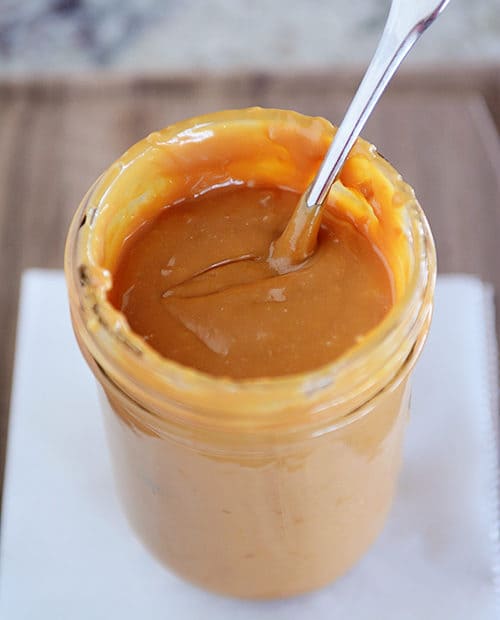
I won’t always be able to do a side-by-side comparison with every pressure cooker recipe I make and post (I do have children and toilets, both of which need cleaning and maintenance every now and then) but I thought this would be an interesting project to enlighten you on this average Thursday.
Also, I’ve added a Pressure Cooker category to my Recipe Index. Slim pickings right now but my plan is to post a few pressure cooker recipes each month – keep an eye out for them on Thursdays.
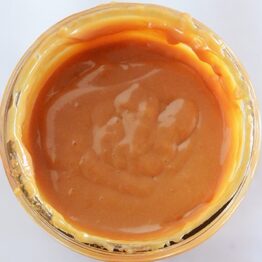
Pressure Cooker Dulce de Leche
Ingredients
- 1 ½ cans, (14-ounces each) sweetened condensed milk
- Pint size canning jar
- Lid and ring for canning jar
- Pressure cooker
Instructions
- Pour the sweetened condensed milk into the canning jar and cap with a lid and ring. Place the steamer insert/basket into the pressure cooker and place the jar on top of it. Fill the pressure cooker pot/insert until water comes up halfway on the jar (WARNING: consult the directions of your pressure cooker to make sure you don’t overfill the pressure cooker with water; it will depend on the size of the pressure cooker).
- Seal the pressure cooker.
- For a stovetop model, bring the pressure cooker to high pressure and maintain high pressure for 50 minutes. Quick release when the time is up.
- For the InstantPot, select Manual and then adjust the time up to 60 minutes. When the time is finished, quick release by pushing the valve to the Venting position to let out the steam.
- Carefully remove the dulce de leche jar from the pressure cooker and let cool until just slightly warm before stirring (or else it will curdle).

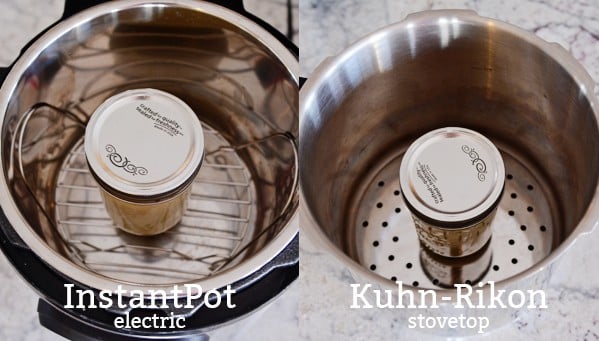
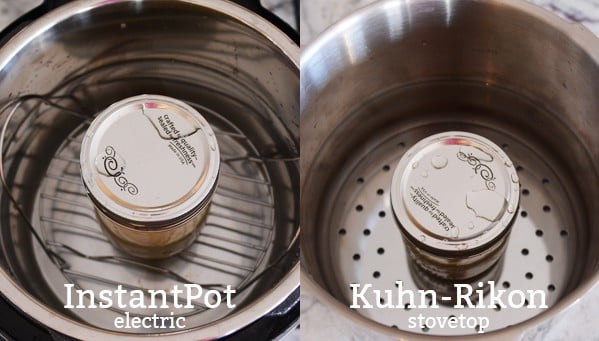

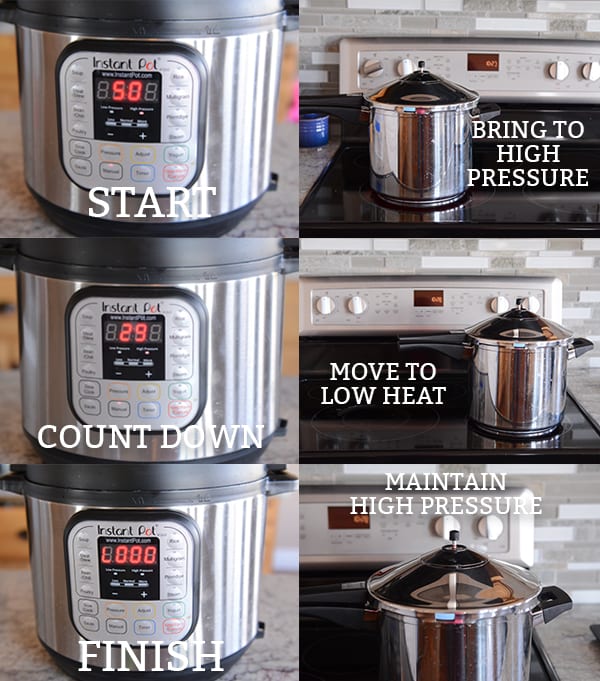
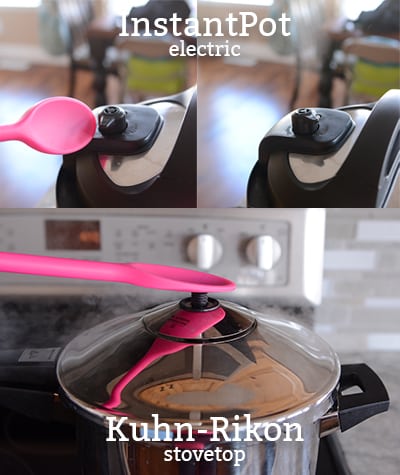
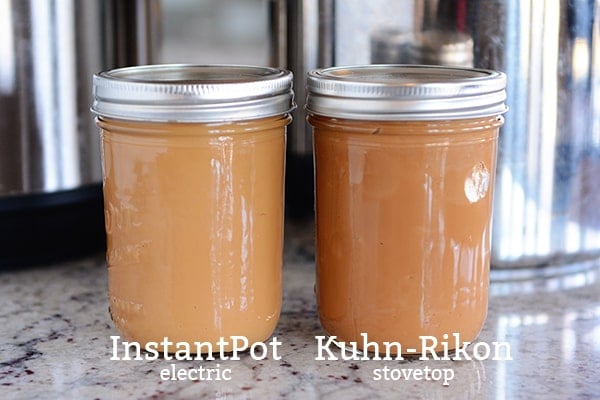
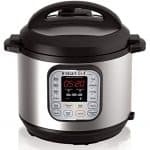

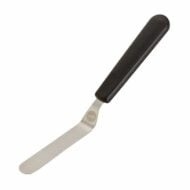

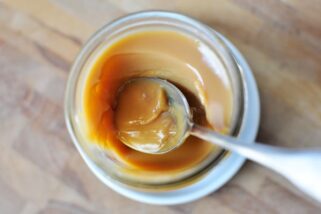

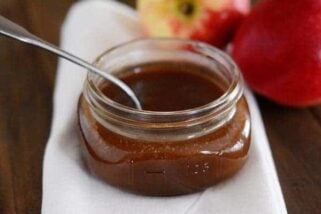
Do you have any idea this can be pressure canned and how long the shelf life would be?
I don’t think it’s safe for canning – sorry!
Hi Cathy, I just wanted to let you know that my family (aunties, my mom, ladies in my Russian church) just boil jars of sweetened condensed milk in the jars they come in. Natasha kitchen has a recipe for it. I’ve kept jars of prepared Dulce de leche in my pantry for years and it was just fine. I use it for cakes
Can this be made in batches and stored unopened? Or is it something that needs to be used right away? I’m newer to canning and haven’t ventured out to pressure canning yet.
It needs to be stored in the refrigerator; it isn’t shelf stable.
Sad day, my jar was broken when I took off the lid. What did I do wrong? I was so excited to try this.
Oh no! What kind of jar was it?
I’m going to make this in my instant pot. Will it be shelf stable? I want to give it as a gift, but don’t want to give out if it will spoil. Thanks 🙂
No, it isn’t sealed to be food safe/shelf stable, so it will still need to be kept in the refrigerator.
I’m not sure f it was the condensed milk brand I used or not enough Cooking time (did 40 minutes in electric pressure cooker) but though it looked perfect golden brown, after stirring it was a little curdly and not as smooth as on stove top. Like not smooth enough to drip over ice cream consistency. Any views?
You shouldn’t stir the dulce de leche until it is completely cooled or it will curdle like that. You can scoop it out and serve it warm, but don’t stir it.
“Pour the sweetened condensed milk into the canning jar and cap with a lid and ring.”
I feel like this is a stupid question, but a matter of safety to know the answer. Do you tighten the lid on the jar, or is it just loose? Seems like a potentially explosive situation if the lid is tight. But then I know nothing about canning. Maybe it’s better if I don’t know because it will keep me from having this in my fridge. 🙂
Hey Amy – I finger tighten the ring (no need to overtighten).
It’s definitely dangerous to have this in the fridge 🙂
I may have missed this, but do they have to be stirred? I’m wanting to give the jars as gifts but don’t want to break the seals.
No 😀
No, they don’t have to be stirred.
The part I love about making it in the jars is that it’s an instantly give-away-able! I loved your slow cooker version so I’m going to try making 6 half-pint size jars in the pressure cooker today and see how that works! Hello neighbor gifts for Christmas. Thanks for this lovely idea. My favorite thing to do with dulce de leche is to make alfajores with it!
60 minutes in the instant pot with a quick release and it was a disgusting, brown curdled mess (and I did not stir it until cool). That time is too long.
I was wondering if it was safe to use old jam jars from the store for this? Anybody have thoughts on that?
I got an instant pot for Mother’s Day so I am currently waiting for this to finish and I can’t even begin to tell you how excited I am (like Christmas morning kind of excited!!!)
can we pour condensed milk directly into the pressure cooker instead of using jars?
Never tried it that way so I’m not sure, sorry!
I have never made dulce de leche so not sure what it is supposed to taste like-is it supposed to taste like caramel? Mine tastes awful-did it for 70 minutes accidentally because obviously I cannot add 50 minutes plus 10 more minutes! Well have one more in now that was 3/4 full and doing for 30 minutes as posted in recipe. Hoping it tastes yummy!
Can I cook both 16oz. mason jars at the same time? If so, for the same amount of time?
Yes, if they fit into your pressure cooker, you can cook both at the same time. You should need to adjust for time unless you find that the dulce de leche isn’t getting dark enough.
I’ve been pressure cooking for about 15 years. I started out with a stove top version, and then converted to electric. I just bought an Instant Pot, and am loving it, so far. Thank you for such a great post, with beautiful pictures. I look forward to seeing more of your pressure cooker recipes, because I’ve used a few of your recipes– all turned out successful.
This is not about dulce de leche, but after your last pressure cooker post I decided to try hard “boiling” eggs in my pressure cooker (since more than one person said they were amazing because they peel like a dream). Holy cow – they are! I used fresh eggs I’d just bought at the store, on low pressure for 6 minutes, then after 5 minutes of natural pressure release dropped them into an ice bath. They are crazy-easy to peel! I can get the whole thing off is about 2 seconds flat, almost all in one piece. I’m converted! Looking forward to more pressure cooking posts (and comments!).
Dulche de leche is definitely yummy, but a perfect hard boiled egg may seal the deal!! @Alicia: Do you have an instant pot or stovetop version?
I have an electric pressure cooker (8 qt). You can google “pressure cooking hard boiled eggs”. Mine turned out amazing!
and you can do a pile of eggs (I’ve boiled up to 24 in my IP). Great for easter time!
Do you know that I’m actually planning on doing it for few years? this and toffees. I need to start with something finally.
The last time I made it in the slow cooker it curdled, and now I’m glad to know why! I probably stirred it too soon in my excitement. Now I’m tempted to make some tonight, but I think if I do I will eat it all this weekend…
I’m Mexican we call it Cajeta instead of dulce de leche the way my mom makes it is by putting the can (label removed) of condensed milk in a pot of water as you did in the pressure cooker and just have it boil in the pot for a few hours.
I thought cajeta was made with goats milk? That’s what I’ve been taught. I wondered if using canned goats milk would work for this– maybe adding a bit of sugar?
I’ve had my instant pot for a little over a year, and I’m gradually finding more and more uses for it. I probably use it most frequently for brown rice and yogurt, as well as ‘refried’ beans, shredded chicken and pork, roasts, from-frozen chicken breasts (way faster than thawing in the microwave first!), chicken stock, risotto, rice pudding, boiled eggs, beef & broccoli…it makes me think that I can handle living without a kitchen for a month or two while we renovate ours (although then I should probably have two 😉
Also, keeping it real is good in my book. While we’re at it…tips on toilet training boys?! My daughter was easy but I suspect my son will not be I read your blog through an RSS reader and I rarely check first to see whose post I’m currently reading, but within a paragraph I can usually tell that it’s you! Don’t worry; that’s a compliment
Ha, well, I”m not sure that’s a safe topic for this thread! The toilet training thing. Honestly, I didn’t potty train any differently with my four boys and then Cam. I’m a knock it out in a day or two kind of girl and so we spent our days 100% at home running around in our undies (ok, just the toddler).
Fun to see the side by side comparison. I wanted to be able to use the dulce de leche right away, which was one of the reasons I decided to try cooking it in a mason jar instead of waiting for the can to cool.
Great perspective, Barbara – that would be one benefit of making it in the canning jar!
Yay for Thursday pressure cooker recipes!! You are a rockstar! Thank you for adding this to your already overflowing plate, Mel!
What do you use dulce de leche for once it’s done?
I use it in the Banoffee pie on my site. We also use it (quite frequently) for dipping apples and other fruit; bananas are particularly good. Sometimes I’ll heat it up until it’s spreadable and swirl it into brownies before baking. It is wonderful folded into buttercream frosting and cheesecake, too.
I think 3 ingredient dulce de leche ice cream would be delicious. Being that sweetened condensed milk is one of the ingredients.
I am so so excited for this category!! I get really sick when pregnant (think vomiting and iv’s) so with my last baby (born in July) I convinced my husband I needed an instapot to make my life easier feeding him and other children. Well, let’s just say I’ve had it almost a year and haven’t even made 7 recipes in it. Thank you for giving me recipes I can now use and show my husband it was a great investment! I love love love your recipes-thank you for taking the time to do this blog!!
Oh boy! 😀 Congrats on the baby.
Mel, what gives made-from-scratch dulce de leche it’s dark color is the addition of baking soda (about half a teaspoon pero liter (4 cups) of milk). I don’t know how it will work when you start with condensed milk but you might want to try it for a really dark color. Have a great week!
Love this insight, Paula! Thanks for letting me know that. I’m going to try it for sure just to see how it works out.
YIppee! So glad to see the pressure cooker tab in the index. I am the new owner of a instant pot…Ordered it just before your post! So happy.
I do it in a pressure cooker as well. I don’t bother taking the condensed milk out of the tin it comes in though. The pressure in the tin and in the pressure cooker the tin wont explode.
Plus by leaving it in the tin you can make it ahead of time and just leave it in the tin until you want it.
You are right Mel, I did just one can in a pint jar. And I think I might have done a 10 minute slow release? Either way, YUM!
Mel, In the pictures of the pressure cookers i see a rack at the bottom of each pot. I have an older style pressure cooker that I use, but it doesn’t have a rack. Do you think that this is necessary with this recipe? I may just need to find a rack to make my sweet husband some caramelly goodness.
That’s a good question. I’ve always thought if you are using jars in the pressure cooker, you need to use a rack but I could be wrong. You might try googling to see if that’s necessary! I’ll do some looking too.
Mel- you can talk about toilets until you’re blue in the face if you continue to provide me delicious meals to feed my family!!
I agree Anne!!
Ditto!
I appreciate knowing that amid all of the amazing recipe testing and beautiful photography that Mel does, she also has to take care of the more un-glamorous parts of life that seem to fill so much of my time. I appreciate you keeping things real, Mel!
just an observation, mel but you mention toilets quite a lot in your posts. It may be an attempt at humor, but I think it is really unappetizing and unappealing top talk about toilets when talking about food. its a turnoff, Just my opinion.
It’s all a part of the process. What goes on must come out.
Potty on
Didn’t you already address this before? Look, it didn’t bother me and while it isn’t a fun subject (toilets), it was to prove a point. She has a life outside of her blog, just as you and I do. Meaning, she can’t do side by side comparisons for every recipe with the two pressure cooker varieties. If her “toilet talk” bothers you to that great of an extent, perhaps you should stop reading her blog.
Thank you for posting more pressure cooker recipes!
I’m excited that you’re going to be posting more pressure cooker recipes. I’ve had an Instant Pot for a couple of years and I’m not sure how I managed without it.
I am so excited that you have started putting up pressure cooker recipes. I just got an Instant Pot from Black Friday sales and it’s my new favourite kitchen tool. And since you are my favourite blogger…I can’t wait to see what you come up with in your pressure cooker.
You say you make two pints at once–how do you store them, and for how long?
I keep them in the refrigerator; they don’t last long but they should be fine in there for several weeks.
They don’t last very long at my house! 🙂
My mom always made this on the stove. Same as above comments about leaving it in the can and removing the label. Put it in a pot on the stove, cover with water, bring to a boil and simmer for an hour, turning over every fifteen minutes. Yes, I guess you can’t just leave it without thinking about it, but for those of us with no pressure cookers, still pretty easy!
You are building up my courage with each pressure cooker post! I am trying it this weekend.
Thursday = best day of the week!
Mel,
I never thought about using a jar. I always cook the can of condensed milk straight in the pressure cooker. So here a suggestion if you want to try sometime: if the can has a paper label, remove it, and then place it in the pressure cooker and cover with water. The time depends on how thick you want your dulce de leche. Then wait until the can is completely cool and open it.
My InstantPot arrived yesterday and I actually have sweetened condensed milk so this might be one of my first tries with IP – @Jackie – what a great idea your Andrew has about apples and dulce de leche!
I am highly impressed with the quick reference guide, manual and cookbook that came with InstantPot. They are all concise, clear and easy to read and/or find what you need. Just enough in and well laid out.
Looking forward to Thursdays – thanks, Mel!
A successful first use of my Instant Pot. I see some speak of cooking in the can but I never liked the thought of that. And as I’m not using the entire amount at once, using a jar that can go in the frig when cool is perfect for me.
A fun recipe and now, like Andrew, I will have dulce de leche with my daily apple 🙂 !!
Dulce de leche with apples is the best (Andrew’s a smart guy). And I agree on making dulce de leche straight in the can. I’m not sure if it’s significant but I don’t like the idea of the chemicals from the aluminum/tin cans leaching into the sweetened condensed milk (not to mention the risk of exploding cans) so I stick with the pressure cooker or slow cooker.
The canned contents already underwent intense heat when canned, right? So wouldn’t it be just as safe in whatever heat we can subject it to?
Good point, Karin. I’m not sure all the technicalities, I just remember reading some threads online about the chemicals/BPA issues in cans but it definitely boils down (pun intended) to personal preference, I suppose. Everyone has a different comfort level and I can see the appeal of lots of different dulce de leche methods.
Yesterday at lunch Andrew informed me that he won’t eat apples anymore unless I make him dulce de leche. I make your slow cooker version all the time and totally get the patience thing… I guess that’s as good a reason as any to invest in a pressure cooker.
Yay! I just wanted to validate your decision to post more pressure cooker recipes in the future. Thank you!!! 🙂
Back it up a step, and you can make it even easier. Don’t take it out of the cans. Grab those little sweetened condensed milk cans, take the labels off, leave the metal can sealed shut, and throw three or four of those in your pressure cooker. Let them cool down a bit, and open one can to use that day. Throw the other still-sealed cans on the shelf in the pantry for later.
Yup ! I do this but never tried three thanks!
Sooooo excited about the new pressure cooking category as my instant pot arrived last week! Keep em coming!
Dulce-de-leche made from sweetened condensed milk makes a great filling for home-made turtles chocolates. I have turtle-shaped chocolate molds so I just line them with a thin layer of chocolate, put a pecan in each foot, fill with the dulce-de-leche and top with another thin layer of chocolate. Yummy!
I so enjoyed reading this informative and interesting post! I would never have thought of trying this in a pressure cooker. A lot of times I get my “best thinking” done when doing the dishes that aren’t put in the dishwasher. Maybe I should do some deep meditating when disinfecting the toilets and maybe then I will come up with creative ideas like this too? 🙂
no toilet talk around food. Have some manners.
Dear Rhonda . . . .I am so sorry my comment was offensive to you.
Oh good grief who cares Rhonda? Really ? What Sheila sad wasnt offensive it was TRUE! I get my best ideas in all kinds of places, since when is crossing comments about a toilet idea rude? It isnt like she brought the toilet into the kitchen …moving on…but i have used my IP since the first week i started making dulce de leche in it, in the can , not transferring it and 1 hour min 2 unopened cans in the basket ( never tried three , water to the fill line ..voila! Pefect every time, in fact if i can push it today i need three cans and may try it .